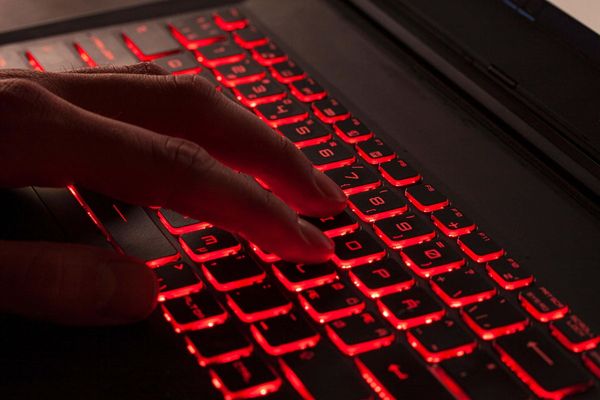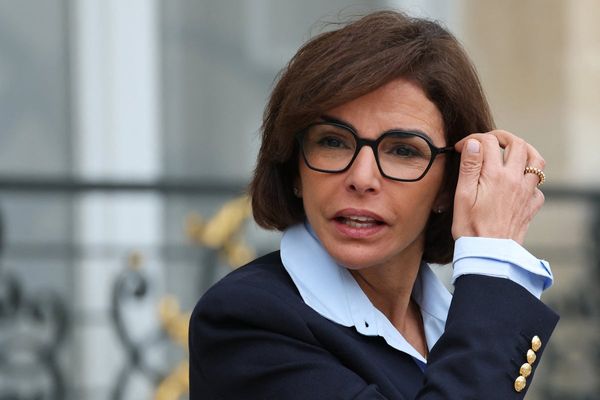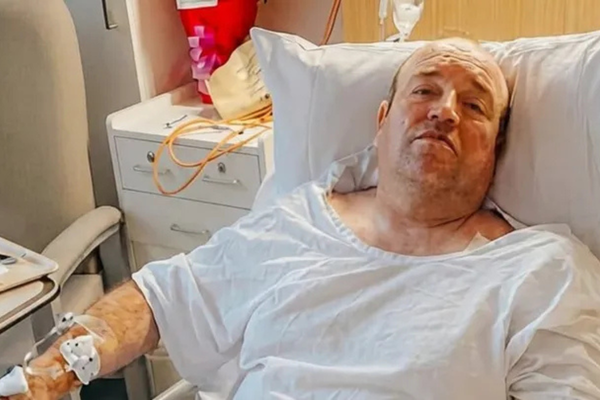Story so far: During this poll season, mentions of the COVID-19 pandemic are still doing the rounds. Countering the Modi government’s claims of providing free novel Coronavirus-19 (COVID-19) vaccines to citizens, Congress general secretary Jairam Ramesh said the BJP was dragged into the act by the Opposition and the Supreme Court. He added that it was hard to forget the “extent of the mismanagement” that occurred during the pandemic.
More than four years ago, the World Health Organisation (WHO) declared COVID-19 as a pandemic, sending countries across the world into shutdowns to stop the spread. While the WHO declared an end to the global health emergency due to COVID-19 last year, new cases and deaths are still being recorded across the world, even in India – one of the nations worst-hit by the virus. Since March 2020, India lost over 5.3 lakh citizens to the virus.
While cases are at an ebb, further concerns have arisen about ‘long Covid and vaccine hesitancy.’ We take stock of where we stand today with regard to COVID-19, and take a brief look at the nation’s battle with the virus.
History of COVID-19 lockdown
As COVID-19 cases – which were first reported in China’s Wuhan province – began cropping up across the world, countries employed different approaches to deal with the rise in infections, deaths and threat due to the virus, employing varying levels of lockdowns. In India, the Centre evoked the Disaster Management Act, enforcing one of the world’s strictest lockdowns from March 24, 2020, shutting all commercial and private organisations, transport and hospitality services — excluding those catering to essential services and goods like food, electricity, medicine and water, media houses, banks, petrol pumps, and security organisations.
Faced with job losses and the sudden onset of a total lockdown, migrants across India began their slow journey on foot to their home States — mainly Uttar Pradesh, Bihar and West Bengal — leading to the biggest migration India had witnessed since the 1947 Partition. The total lockdown lasted till May 1, 2020, as cases and deaths due to the virus rose rapidly. By May 2020, India had crossed over 1 lakh cases and 5000 deaths.
To tackle the resulting economic downturn, migration, stranding of Indians abroad and the spread of the virus, the Centre began to gradually ‘unlock’ the nation in phases. Running special trains, aircrafts and naval ships in phases, the Centre facilitated the return of over 52 lakh Indians stranded abroad by March 2021 and ferried 63.15 lakh migrants across 23 states by August 2020. Simultaneously, the Centre also rolled out a special economic package of over ₹ 10 lakh crores and a slew of reforms across sectors to kickstart the economy.
As the Centre began slowly permitting the nation to open up from lockdown, COVID-19 cases and deaths began to steadily rise as more and more people were exposed to the virus. By September, daily cases had hit a peak of 96,000 new infections while total deaths rose to 1 lakh before the rate of increase fell. Simultaneously, trials for the newly-developed COVID-19 vaccines —Covishield and Covaxin— progressed and the government began to roll them out from January 16, 2021. Trials for other vaccines like Sputnik V, Corbevax, Covovax, iNCOVACC, and GEMCOVAC were also launched.
Vaccinations, 2nd wave & decline
Prioritising essential workers including healthcare workers, police, paramilitary forces, sanitation workers, frontline volunteers, the Centre vaccinated 1.4 crore people with the first dose of either Covishield and Covaxin by March 2021. Later, in phases, the Centre allowed citizens above 60 years, 45-60 years, 18- 44 years, 15-18 years and later 12-14 years to receive both vaccine doses and subsequently the additional booster dose — free of cost at government centres and at capped prices at private centres.
As the vaccination rate picked up pace, India also witnessed its deadliest wave of COVID-19 infections. By March 2021, cases rose to 1.1 crore cases and deaths to 1.6 lakhs, forcing states like Maharashtra, Delhi, Karnataka, and Uttar Pradesh to reimpose stringent lockdown measures. Despite scaling up its health facilities, India also witnessed acute shortage of oxygen cylinders, beds and vaccines, as newer variants like Beta, Gamma, and Delta, as well as allied infections caused by black fungus, yellow fungus, and pink fungus emerged with higher severity than the virus spread in the first wave (Alpha). Between March and September 2021, cases rose sharply from 1.1 crores to 3.3 crores, claiming up to 4.5 lakh lives till then.
Several crowded events like the Kumbh Mela and election rallies for State polls in Assam, Kerala, Tamil Nadu, Puducherry, and West Bengal gained criticism from experts, courts and politicians as cases spiked across India. With several States grappling to procure vaccine doses and oxygen supply, hundreds of dead bodies appeared washed up on the banks of the river Ganges as crematoria across India were overflowing. Faced with a burdening number of infections,the Centre accelerated the vaccination drive touching almost 50 crore doses by August end. Despite high domestic demand, the Centre also began exportingvaccines to countries in Africa, North and South America, Ukraine and Asia under its ‘Vaccine Maitri’ programme.
Cases continued to rise but at a slower rate after September 2021 and by January 2022, the severity reduced, with most reported cases being asymptomatic. A third, less-intense wave of infection spread in India from December 2021 as India recorded its first case for the new Omicron variant which carried a higher risk of re-infection. The rise in cases continued till February 2022, after which the daily cases recorded dropped to 10,000, with total fatalities also remaining constant at 5.2 lakhs. In March, the Centre revoked the Disaster Management Act orders imposed for containing COVID-19 and bolstered the vaccination drive. By July 2022, the nation had administered 200 crore doses including first, second and booster doses.
In March 2023, India once again witnessed a small spike in daily infections recording over 1000 cases — mostly asymptomatic— and three deaths. However, active cases remained low, comprising 0.01% of the total infections, and recovery rate stood at 98.8% while fatality rate remained at 1.19%.
COVID-19 cases today & vaccination drive
On May 5, 2023, WHO chief Dr. Tedros Adhanom Ghebreyesus declared an end to the public emergency which had arisen due to COVID-19. However, he said that the risk of new emerging variants causing a surge in cases and deaths remained. While the pandemic’s effects had waned due to increased immunity caused by mass vaccination, he warned nations of post-COVID conditions i.e. ‘long COVID.’
As of April 11, 2024, India has only 640 active COVID-19 cases while the total fatalities are at 5,33,570. Around 4.45 crore people have been discharged till date, clocking a recovery rate of 98.81%.

While there are few active cases, symptoms of long COVID are prevalent among Indians.
A study by the Lancet COVID-19 Commission India Task Force, found that women were more likely to develop long COVID issues compared to men. The study, which was conducted on 2205 subjects from three districts in Haryana— Rohtak, Gurugram, and Jhajjar, found that only cough remained as the significant persistent symptom while other illnesses like depression, fever, tiredness, and influenza-like issues were found to be statistically insignificant.
However, another Lancet study found that COVID-19 had replaced stroke to become the second-leading cause of death globally in 2021. In India, COVID-19 had slashed the life expectancy by 1.9 years, reducing the net gain of life expectancy between 1990 and 2021 to 7.9 years.
Currently, only 14 private and public centres are offering COVID-19 vaccinations, as 92.66% of Indians are fully vaccinated. As of date, India has administered 220 crore doses of COVID-19 vaccines, of which 102 crores are first dose, 95.19 crores are second dose and 22.74 crores are ‘precaution doses’ (booster dose).

Among States, Uttar Pradesh ranks the highest, vaccinating 39.2 crore citizens of which 17.7 crores are partially vaccinated (only 1 dose), 16.9 crore are fully vaccinated while 4.6 crore have also received the precaution dose. The second-highest vaccine coverage is in Maharashtra (17.8 crores), followed by Bihar (15.73 crores), West Bengal (15.61 crores) and Madhya Pradesh (13.4 crores).
In the last two weeks (28 March – 8 April), the total vaccinations done across all 14 centres range between 9 and 133, mostly precaution doses for citizens between ages 18- 44. Despite COVID-19 vaccine doses available for children above 12 years (Covovax, Corbevax and Covaxin), the total number of doses administered to children between ages 12-18 is only 18.97 crores; this includes both doses. While India approximately has 43 crore children below the age of 18, as per UNICEF, COVID-19 innoculation among them is very poor (21%).

Moreover, the Indian Council of Medical Research (ICMR), which has been spearheading the COVID-19 strategy in India, has not issued any guidelines allowing vaccination of children below the age of 12. Four vaccines approved by ICMR —Covaxin, Corbevax, Covovax and the ZyCoV-D — are available for paediatric usage. A 2023 study has found that parental hesitancy, lack of guidelines and adverse effects of immunisation were causing hurdles in innoculating children for COVID-19. It concluded that a school-based vaccination program like ‘Mission Indradhanush’ would be most effective in covering majority of India’s children.
With India only reporting few COVID-19 cases everyday (mostly asymptomatic) and the vaccination drive slowed down drastically, India’s fight against Coronavirus-19 has been reduced to screening and studying new variants.







